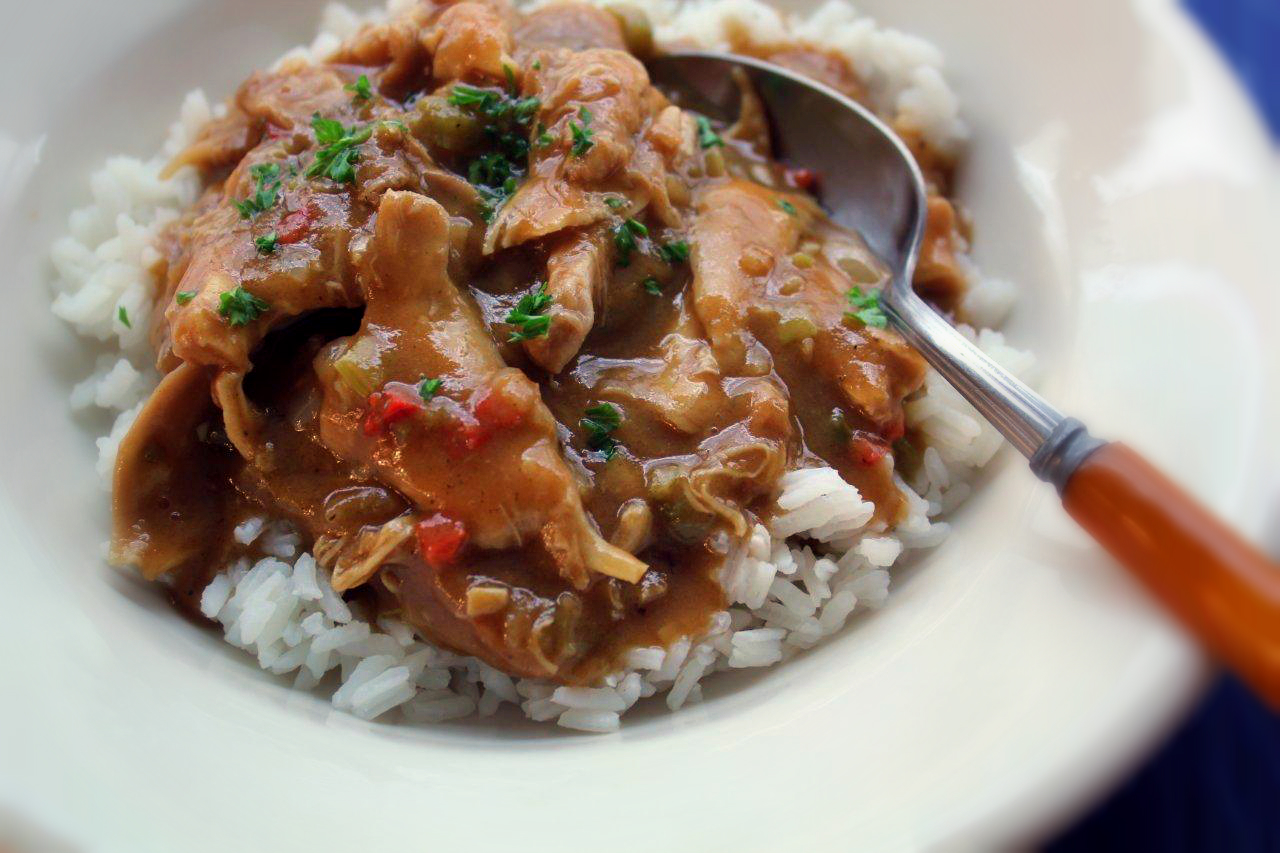Chicken etouffee is a flavorful Cajun stew that is a beloved staple of Louisiana cuisine. It features tender pieces of chicken smothered in a rich nuanced sauce, typically served over white rice. With its complex layers of flavor and hearty satisfaction it’s easy to see why this dish has remained a favorite for generations.
A Brief History of Chicken Etouffee
To understand what makes chicken etouffee special, it helps to know a little about its origins Etouffee traces its roots back to French settlers in Louisiana in the 18th century The word “etouffee” roughly translates to “smothered” or “suffocated” in French, referring to the way the meat is drowned in the hearty sauce.
Over time French cooking traditions blended with local Creole flavors leading to distinctly Cajun dishes like etouffee. This stew likely evolved as a way to stretch limited ingredients and make the most of what was on hand. The classic components of the holy trinity (onions, celery, and bell peppers), roux, and local seasonings came together to create a satisfying one-pot meal.
Today, chicken etouffee remains a staple in Louisiana, served in homes, local restaurants, and food festivals, especially around Mardi Gras. It’s a celebrated symbol of the state’s rich culinary heritage.
How to Make Classic Chicken Etouffee
While recipes can vary, chicken etouffee typically starts with building a flavor base of onions, celery, bell peppers, and garlic sauteed in butter. Then a browned roux made of flour and butter adds richness and body. Chicken stock and Creole seasonings like cayenne, black pepper, thyme, and bay leaves infuse the sauce with flavor. Finally, chopped chicken simmered in the sauce absorbs all the incredible flavors.
The roux is what really sets an etouffee apart. A properly made roux requires patience as the flour cooks to a rich brown over 15-25 minutes. This deep, chocolate color adds incredible depth and makes the sauce velvety and complex. The longer cook time also gives the raw flour taste a chance to cook out. Rushing the roux risks a bland, pasty sauce.
Serving chicken etouffee over a bed of white rice is traditional. The sauce seeps down into the rice, allowing you to enjoy every drop. A garnish of chopped green onions adds freshness and color. Some like to add a dash of hot sauce for extra heat.
Regional Variations to Try
One of the great things about chicken etouffee is that cooks can adapt it to local tastes and ingredients. Here are some of the delicious regional spins you may encounter:
-
Creole Style: Features tomatoes for added richness and a splash of red wine. Often includes shrimp in addition to chicken.
-
Cajun Country: Heavy on cayenne pepper and may use duck or rabbit instead of chicken.
-
New Orleans: Heavy dose of Creole seasonings like filé powder. Sometimes made with crawfish.
-
Seafood Etouffee: Swaps chicken for Louisiana shellfish like shrimp, crawfish, crab, or oysters.
Tips for Making Perfect Chicken Etouffee at Home
Chicken etouffee is meant to be a simple, humble dish, but there are a few tips to ensure you end up with an authentic, flavor-packed version:
-
Use Bone-In Chicken: Bone-in cuts like thighs have more flavor over bland boneless chicken breasts. Opt for dark meat.
-
Make a Dark Roux: Take the time to cook the roux until dark for maximum flavor impact.
-
Season Gradually: Start with a little seasoning and adjust to taste. You can always add more but you can’t take it out.
-
Simmer Low and Slow: Letting the flavors meld results in a more cohesive, complex sauce.
-
Serve with Rice: Spoon chicken etouffee over steaming white rice to soak up every drop of sauce.
With the right techniques, you can recreate the rich heritage of Louisiana cuisine right in your own kitchen. Just be prepared for requests for second helpings!
Frequently Asked Questions About Chicken Etouffee
What type of roux is best for chicken etouffee?
A peanut butter to dark chocolate colored roux is ideal for etouffee. The longer cook time results in a richer, more complex flavor. A light blonde roux would be too delicate.
Can you use chicken breasts instead of thighs?
You can, but bone-in chicken thighs are preferable. The fat and collagen in dark meat keeps it tender and moist in the sauce. Breasts can dry out.
What seasoning is typically used?
A Creole seasoning blend containing garlic, black pepper, cayenne, thyme, oregano, and bay leaves provides an authentic flavor. Go easy at first as many blends are salty.
Is file powder necessary?
While not required, a sprinkle of file powder adds an iconic flavor note. The ground sassafras leaf acts as a thickening agent with a unique herbal, earthy taste.
Can you prepare chicken etouffee in advance?
Yes, etouffee actually benefits from make-ahead convenience. Prepare completely and refrigerate overnight to allow flavors to meld. Reheat gently before serving.
With its deep, smoky flavors and tender bites of chicken, it’s easy to see why chicken etouffee has remained a staple of Cajun cuisine for generations. This hearty one-pot wonder proves that comfort food can also boast incredible complexity. So gather the ingredients and enjoy a taste of Louisiana heritage right from your own kitchen.

Ingredients[]
- 1/3 cup olive oil
- 1 large onion, chopped
- 1/2 cup chopped green bell pepper (or mild hot pepper)
- 3 tsp. minced garlic
- 8 oz. clam juice (or dry wine)
- 1 3/4 tsp. Cajun spice mix or blackened seasoning
- 3 whole chicken breasts, bones and cubed
- 1 1/2 cups uncooked rice
- 1/3 cup rice flour
- 1/2 cup celery, chopped
- 1 16 oz. can tomatoes, chopped
Description[]
Stave off those cold winter nights with this delicious recipe.
